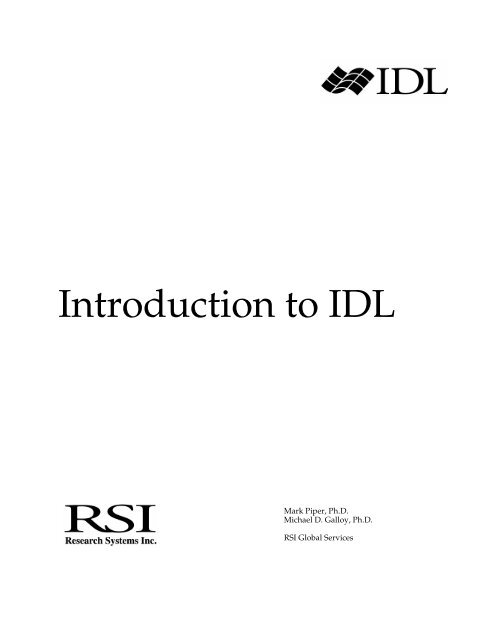
Reading explicitly-formatted text If you know ahead of time that a line of data follows a certain format, specifying that format will resolve some of the ambiguities that come with freeformatted files. Unit: 100, File: sample1.txt % Execution halted at: $MAIN$ What happened? Read beyond the end of the file(because we had already read in the first 2 lines) IDL> point_lun, lun, 0 IDL> readf,lun,data IDL> print, min(data), max(data) 19.3300 35.1800 Sample code: IDL> print, file_lines('sample1.txt') 24 IDL> openr, lun, 'sample1.txt', /get_lun IDL> readf, lun, data1 IDL> print, data1 20.2000 IDL> readf, lun, data2 IDL> print, data2 22.2300 IDL> data = fltarr(2,24) IDL> readf,lun,data % READF: End of file encountered. Rule #6: Data is converted into the type specified by the variable (or assumed, if variable has not been initialized) Rule #7: Complex numbers must be in the (r,i) format. Rule #5: If the current input line is not empty, but there are no variables left requiring input, ignore the remainder of the line.

Rule #4: If the current input line is empty, and there are still variables left requiring input, read another line. Rule #3: When reading into an array of n elements, IDL will try to read n separate values from the file. Rule #2: Input data must be separated by commas or whitespace (spaces or tabs).

If you try to pass readf an array subscript, the array will not be modified!įree-format rules Rule #1: If reading into a string variable, all characters remaining on the current line are read into the variable. Syntax: readf, lun, variable Important Note: variable can't be a subscript of an array – this is one case where IDL passes variables by value, and not by reference. Because there is no explicit format, IDL uses 7 rules to interpret the data using the readf command. Reading in a free-format file Free-format ASCII files use whitespace or commas to separate variables. Lots of I/O overhead Numbers use unnecessary amounts of disk space Subject to formatting errors Human readable Universal common format Can have a mix of text and numbers To have IDL automatically assign a number (recommended), use the /get_lun keyword. It's IDL's way of identifying the file internally, and is just a long integer. They are: openr – open for reading openw – open for writing (erases file if it already exists) openu – open for updating Syntax: openr, lun, filename lun stands for Logical Unit Number.


Opening and closing files There are three commands to open files, depending on the intended use (this applies to ASCII and binary files). If the field is an array, its elements may be accessed using the usual bracket notation: structname.fieldname To discover what fields are in a structure, use the TAG_NAMES function: print, TAG_NAMES(structname) To create a structure: structname = CREATE_STRUCT(fieldname1, data1, fieldname2, data2.) Fields of a structure are accessed as structname.fieldname. IDL Data structures A structure is a way of encapsulating different data types into a single variable. There are two routines which are useful for getting information about files before opening them: file_lines(filename) – returns the number of lines in an ASCII file file_info(filename) – returns an IDL data structure of file information (existence, readability, writeability, time of creation, size, and more) Reading and writing to scientific data formats.Reading and writing unformatted binary files.Reading and writing ASCII (text) files.IDL Week 2: What we'll cover today IDL data structures


 0 kommentar(er)
0 kommentar(er)
